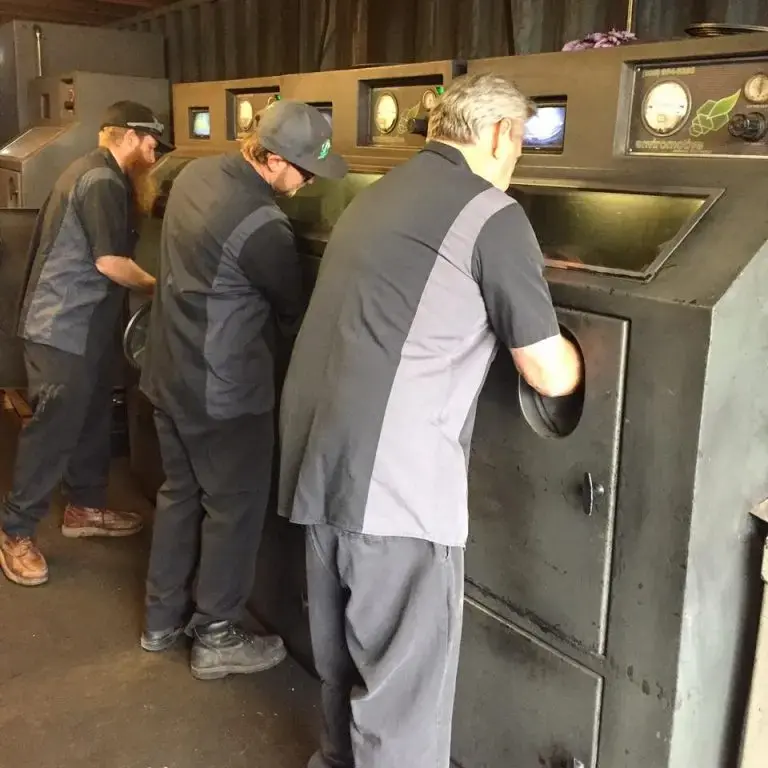Manual vs. Automated DPF Cleaning: Which Method Works Best?
- The Enviromotive Experts

- Feb 24
- 3 min read
Updated: Sep 3
When it comes to DPF cleaning equipment, the choice between manual vs. automated systems is a common debate. On the surface, automated cleaning seems like the easier option—just place the filter in the machine, press a button, and let it run. However, real-world results show that manual DPF cleaning produces a more thorough and effective clean.
In this article, we’ll break down the key differences between manual vs. automated DPF cleaning, explaining why a manual approach leads to better performance, cleaner filters, and long-term cost savings.
How We Developed a Better DPF Cleaning System
Enviromotive has been designing industrial cleaning equipment for over 40 years. When DPF cleaning technology became necessary in 2007, we analyzed the available automated cleaning systems and found that they had serious limitations.
Initial testing showed that automated systems struggled to fully clean diesel particulate filters. Many would only remove about 60% of soot, leaving behind stubborn deposits in critical areas. Worse, some automated processes even damaged the filter substrate, reducing its lifespan.
This research led us to develop a manual DPF cleaning system that allows operators to target specific problem areas, ensuring a completely cleaned filter.
The Problem with Automated DPF Cleaning
Automated DPF cleaning machines often work on a preset cycle, blowing air or water through the filter. While this removes loose soot, it fails to focus on heavily clogged areas, particularly a common issue known as the “Gumball.”
What is the Gumball?
Every diesel particulate filter has a specific area where soot builds up more densely, depending on the engine configuration and exhaust flow pattern. This area, known as the Gumball, typically makes up 30% to 40% of the filter and requires extra attention to be fully cleaned.
Automated systems fail to target the Gumball because they operate uniformly across the filter. Instead of tackling the high-soot zones, they push air through the path of least resistance, meaning some soot remains trapped even after a full cleaning cycle.
Why Manual DPF Cleaning is More Effective
Unlike automated systems, manual DPF cleaning allows operators to:
Focus air pressure directly on clogged areas
Adjust cleaning intensity based on soot buildup
Ensure thorough cleaning without damaging the filter
Our EvacuBlast DPF Cleaning System was specifically designed to allow technicians to manually control the cleaning process, ensuring the Gumball area is fully addressed. This results in a cleaner DPF, longer filter lifespan, and better vehicle performance.

Manual vs. Automated: Cost, Complexity, and Durability
Beyond cleaning effectiveness, manual DPF cleaning systems offer additional advantages:
1. Fewer Mechanical Failures
Automated cleaning machines are complex and have more parts that can break. Repairs and maintenance can be expensive, leading to unexpected downtime.
2. Lower Upfront and Long-Term Costs
Many buyers assume automated systems are superior simply because they are more expensive. However, they often fail to clean effectively, making them a poor investment. A manual system provides better cleaning at a lower cost.
3. Greater Operator Control
With a manual system, technicians can adjust cleaning techniques in real time, ensuring each filter gets the attention it needs.
Choosing the Right DPF Cleaning Equipment
If you’re looking for the most effective way to clean DPFs, consider the advantages of a manual system over automation.
Our EvacuBlast DPF Cleaning System ensures:
✔ Complete soot removal from all filter areas
✔ Lower maintenance costs compared to automated systems
✔ A longer lifespan for DPF filters
✔ No risk of mechanical failure disrupting operations
If you want to learn more about DPF cleaning equipment and how manual vs. automated systems compare, our team is here to help.
📞 Call (800)954-8265 📧Email info@Enviromotive.net


